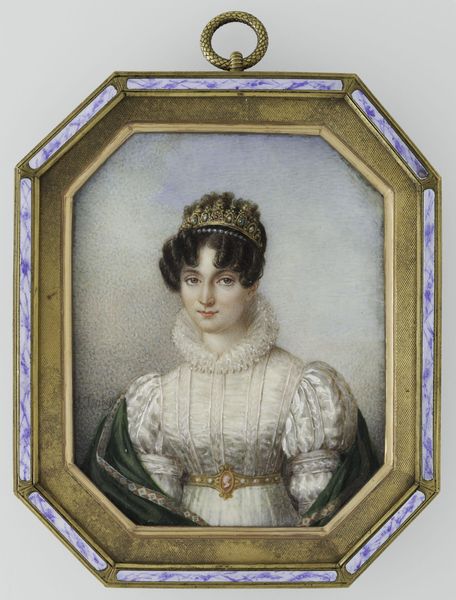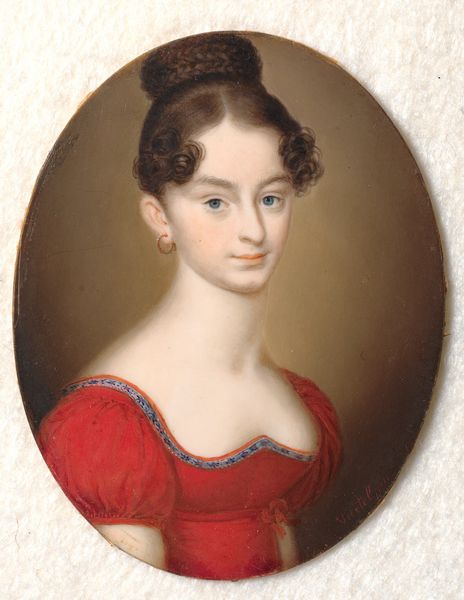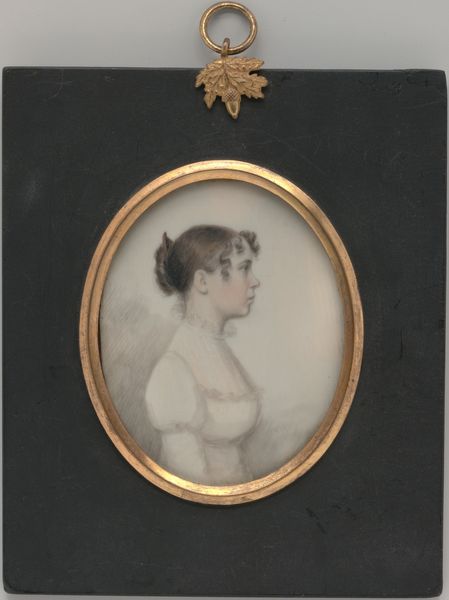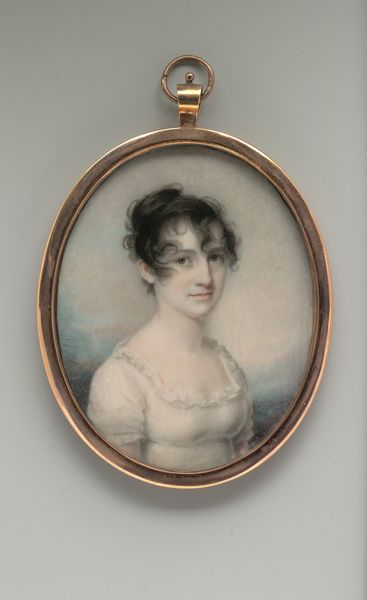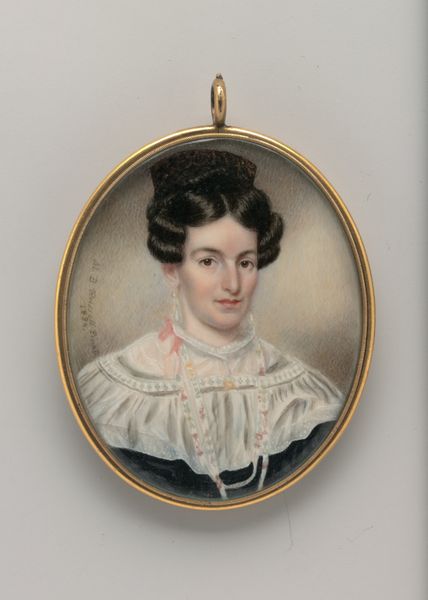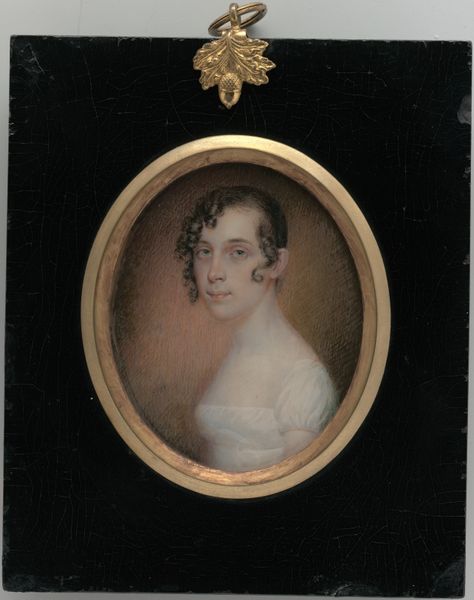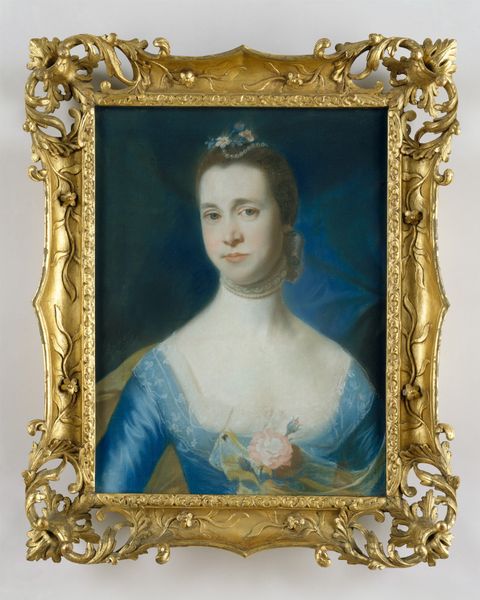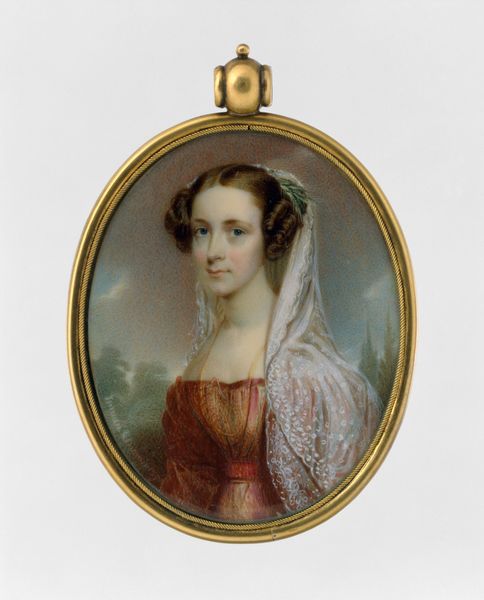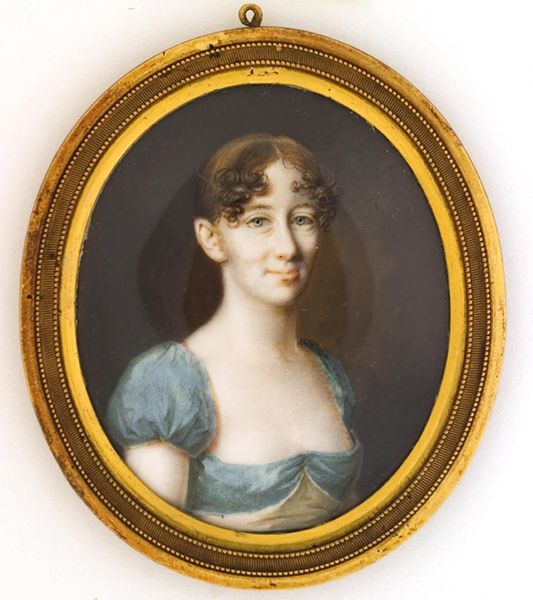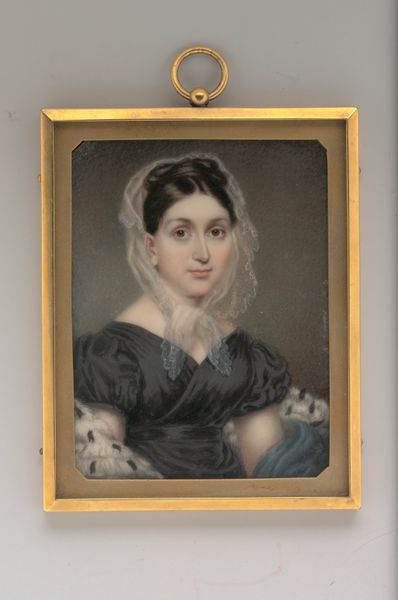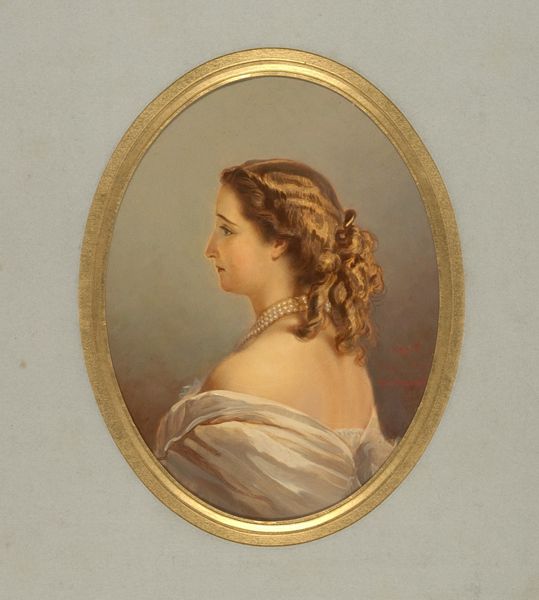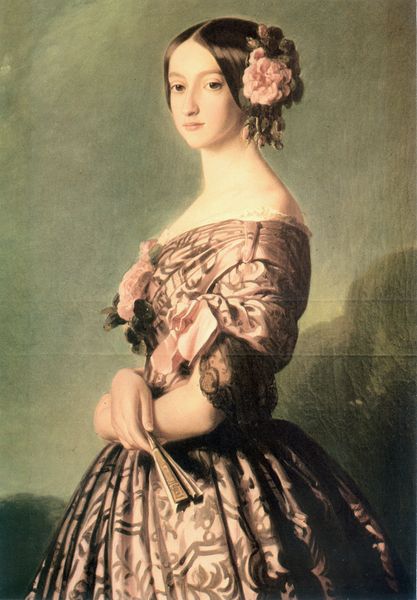
painting, oil-paint
#
portrait
#
painting
#
oil-paint
#
historical fashion
#
romanticism
#
academic-art
#
decorative-art
#
decorative art
Dimensions: 3 1/4 x 2 1/2 in. (8.3 x 6.5 cm)
Copyright: Public Domain
Curator: Good morning, I'm delighted to introduce you to "Portrait of a Lady," an oil painting crafted between 1836 and 1838 by Charles Cromwell Ingham. This intimate work offers a glimpse into the lives of women during that period, steeped in the romantic and decorative ideals so popular at the time. Editor: Intimate is certainly the word. The pale tones and tightly controlled brushwork give the portrait a delicate, almost ethereal quality. The oval frame seems to hold her captive, reinforcing that feeling of fragility. Curator: Exactly! The portrait miniaturization in particular served an important function for women in that time. Portrait miniatures could act as symbols of romantic and familial affection that played a pivotal role in communicating status. Editor: Looking closer at the brushwork, I see how Ingham has used short, delicate strokes to build up the form of the face. It almost reminds me of watercolor. Note also how the tight frame centers her, reinforcing a singular idea of "femininity." Curator: Precisely. Consider her demure expression and carefully arranged hair. These elements spoke volumes about her social standing and character within the context of 19th-century American society. It presents such an intentional representation, an identity performed and approved for public consumption. Editor: There's a curious tension, though. While her pose and expression are certainly restrained, the colors themselves—the coral shawl, the emerald dress—hint at an inner vivacity barely contained. The artist plays a very careful game of visibility and discretion. Curator: Which underscores the broader game played by women in that period; fashion, social interaction, marriage, even a certain kind of artistic representation all acted as stages where identity could be carefully managed. Ingham’s lady wasn’t just being painted; she was actively curating an image. Editor: I like that. The detail of the gilded frame is beautiful and emphasizes its inherent nature as an object, a structured visual experience intended to project prestige. Overall, I see how the artist skillfully balances form and subject. Curator: Indeed, studying works such as these brings us face-to-face not only with the individual but also with the culture that shaped her perception of self and public appearance. Editor: It’s a testament to the power of close analysis and contextual awareness; what first appeared fragile now possesses strength when read against the art of the time. Thank you.
Comments
No comments
Be the first to comment and join the conversation on the ultimate creative platform.

